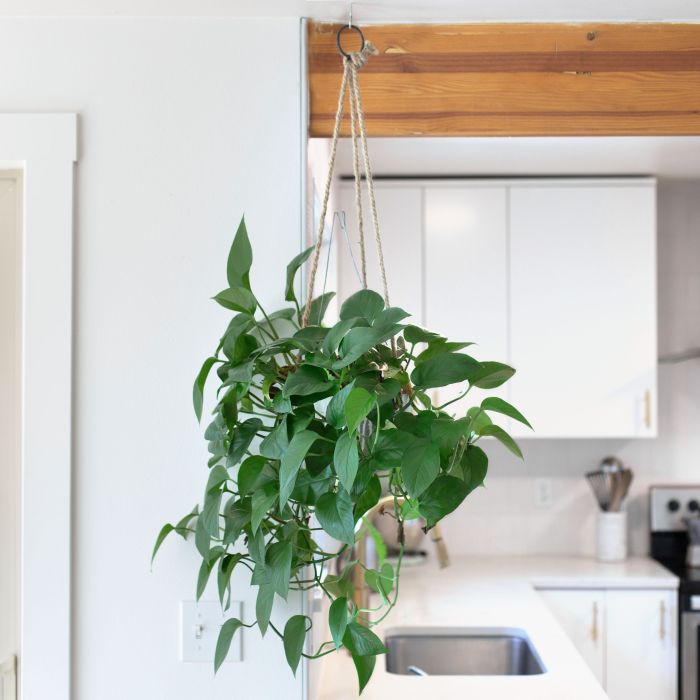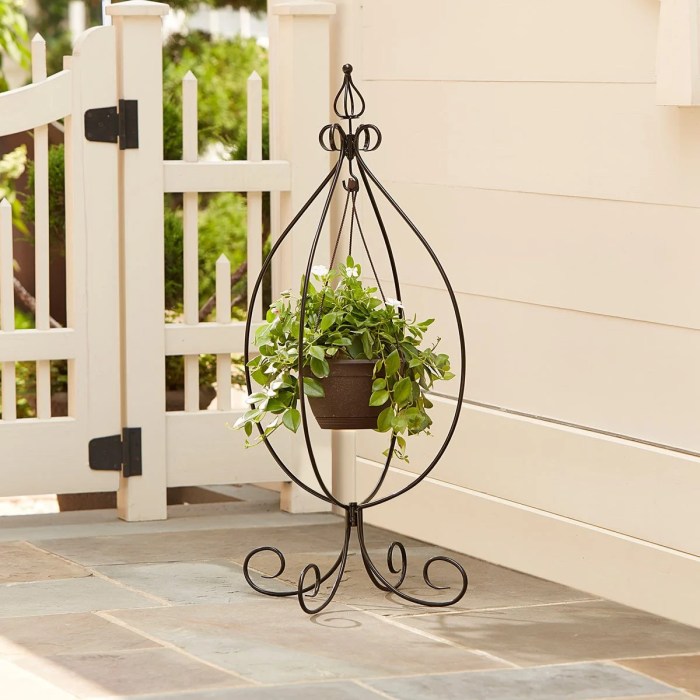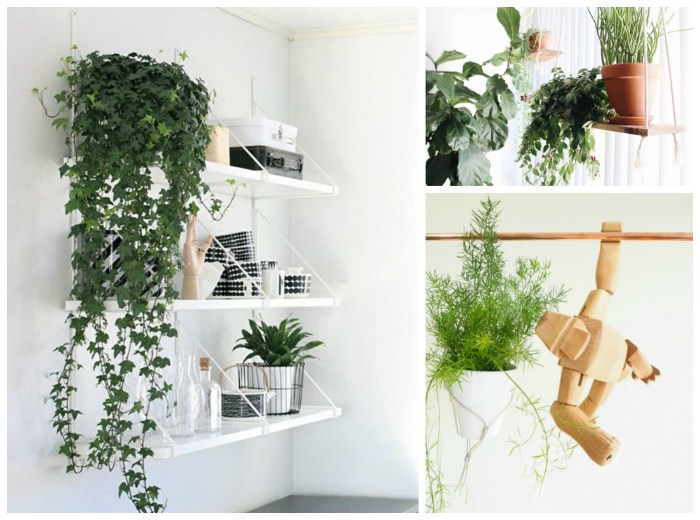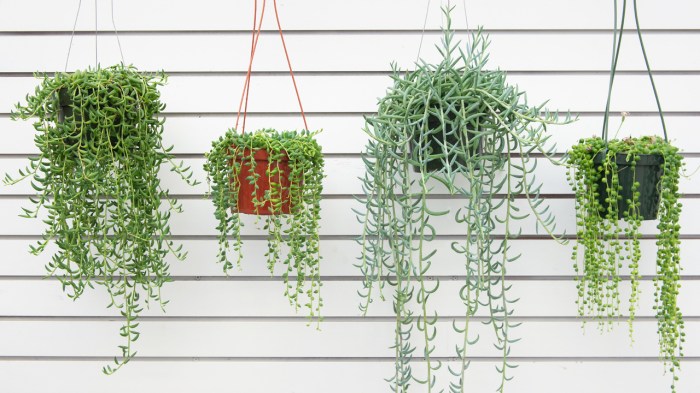Whether you’re a seasoned gardener or just starting your green thumb journey, you’ve likely encountered the beauty of hanging plants. But can hanging plants be planted in the ground? The answer is yes, and this comprehensive guide will delve into the methods, plant selection, site considerations, care and maintenance, and creative applications of transitioning your hanging plants to the ground.
Planting hanging plants in the ground offers numerous benefits, including enhancing the aesthetics of your outdoor space, adding height and dimension to borders, and creating privacy screens or focal points. With proper care and planning, you can successfully transplant your hanging plants and enjoy their vibrant presence in your garden.
Planting Methods

Planting hanging plants in the ground requires careful preparation and attention to detail to ensure successful transplanting and prevent root damage. Here are the various methods for planting hanging plants in the ground, along with detailed instructions for each:
Preparing the Soil
Before planting, prepare the soil by digging a hole twice the width of the root ball and just as deep. Amend the soil with organic matter, such as compost or peat moss, to improve drainage and provide nutrients. If the soil is heavy clay, add sand or perlite to improve drainage.
Digging the Hole
Use a shovel to dig the hole. Make the sides straight and the bottom level. Place the root ball in the hole and backfill with the amended soil. Gently firm the soil around the base of the plant to remove any air pockets.
Transplanting
Carefully remove the plant from its container. Loosen any circling roots and gently spread them out. Place the plant in the prepared hole and backfill with soil. Water the plant deeply to settle the soil and remove any air pockets.
Tips for Successful Transplanting
- Water the plant thoroughly before transplanting to reduce transplant shock.
- Handle the plant by the root ball, not the stems or leaves.
- Plant at the same depth as it was in the container.
- Mulch around the plant to retain moisture and suppress weeds.
Plant Selection: Can Hanging Plants Be Planted In The Ground

When selecting hanging plants for planting in the ground, it is essential to consider their specific requirements. Not all hanging plants are suited to this transition, and choosing the right species is crucial for their success.
Generally, hanging plants that prefer well-drained soil, moderate sunlight, and regular watering are good candidates for planting in the ground. They should also be able to tolerate the local climate and have a root system that can adapt to in-ground conditions.
Popular Hanging Plants for Ground Planting
- Spider Plant (Chlorophytum comosum):This popular hanging plant is known for its trailing foliage and ability to tolerate a range of conditions. It prefers bright, indirect light and well-drained soil.
- Pothos (Epipremnum aureum):Another versatile option, pothos can thrive in low light and tolerate occasional drought. It has heart-shaped leaves and trailing stems that can spread up to several feet.
- Golden Pathos (Scindapsus aureus):Similar to pothos, golden pathos has variegated leaves and can tolerate low light conditions. It is known for its fast growth and easy maintenance.
- Peace Lily (Spathiphyllum wallisii):Peace lilies prefer moist, well-drained soil and bright, indirect light. They produce white, trumpet-shaped flowers that add a touch of elegance to the garden.
- Chinese Evergreen (Aglaonema):This low-maintenance plant is known for its tolerance of low light and infrequent watering. It has attractive foliage with variegated patterns.
Site Considerations

Selecting the ideal location for planting hanging plants in the ground is crucial for their growth and well-being. Various factors must be taken into account, including sunlight exposure, drainage, and soil composition.
Can hanging plants be planted in the ground? Yes, many hanging plants can be successfully transplanted into the ground, offering a lush and cascading effect to your garden. Bunnings offers a wide selection of bunnings hanging plants outdoor that are suitable for both hanging and ground planting.
These plants come in various sizes, colors, and textures, providing endless possibilities for creating a vibrant and inviting outdoor space. After acclimating the plants to outdoor conditions, simply dig a hole twice the width of the root ball and plant the hanging plant at the same depth it was in the hanging container.
Water thoroughly and enjoy the beauty of your newly planted hanging plants.
Adequate sunlight is essential for photosynthesis and plant growth. Determine the amount of sunlight the site receives throughout the day, considering both direct and indirect light. Some hanging plants, such as ferns and begonias, prefer shady areas, while others, like petunias and geraniums, thrive in full sun.
Drainage is another important factor. Hanging plants should be planted in well-drained soil that allows excess water to drain away easily. Poor drainage can lead to root rot and other problems. Test the drainage by digging a hole and filling it with water.
If the water drains away within a few hours, the drainage is adequate.
Finally, consider the soil composition. Hanging plants prefer loose, well-aerated soil that is rich in organic matter. Amend the soil with compost or other organic materials to improve its fertility and drainage.
Assessing Site Suitability
To assess the suitability of a particular site for hanging plants, consider the following steps:
- Observe the sunlight exposure throughout the day.
- Dig a hole and fill it with water to test drainage.
- Examine the soil composition and amend it if necessary.
- Consult with a local nursery or gardening expert for specific recommendations based on the plant species you intend to grow.
Care and Maintenance

Maintaining hanging plants planted in the ground requires ongoing care to ensure their health and aesthetic appeal. Proper watering, fertilization, and pest and disease control are essential for their well-being.
Can hanging plants be planted in the ground? Yes, many hanging plants can thrive when transplanted into the ground, provided they are given the right conditions. For more information on outdoor hanging plants, visit outdoor hanging plants bunnings . As a general rule, hanging plants that prefer moist, well-drained soil and partial shade are good candidates for planting in the ground.
Watering
Water hanging plants regularly, especially during hot and dry weather. The frequency of watering depends on factors such as soil type, climate, and plant species. As a general rule, water when the top inch of soil feels dry to the touch.
While hanging plants offer a unique way to add greenery to your home, you may wonder if they can be planted in the ground. The answer is yes, and bunnings hanging geraniums are a great example. These geraniums, known for their vibrant blooms and trailing habit, can be easily transplanted into the garden.
Simply dig a hole twice the width of the root ball and plant the geranium at the same depth it was in the hanging basket.
Fertilization
Fertilize hanging plants monthly during the growing season with a balanced liquid fertilizer. Follow the instructions on the fertilizer label for proper dosage. Fertilization provides essential nutrients for healthy growth and blooming.
Pest and Disease Control
Hanging plants are susceptible to various pests and diseases. Monitor plants regularly for signs of infestation or infection. Common pests include aphids, spider mites, and whiteflies. Treat infestations promptly with insecticidal soap or neem oil. Fungal diseases such as powdery mildew can be controlled with fungicides.
Pruning, Can hanging plants be planted in the ground
Regular pruning helps maintain the shape and size of hanging plants. Remove dead or damaged leaves and stems. Trim overgrown vines to prevent them from becoming too heavy and breaking.
Creative Applications
Hanging plants planted in the ground offer a wealth of creative possibilities for enhancing the aesthetic appeal of outdoor spaces. Their versatility allows them to be incorporated into garden designs in countless ways, creating stunning visual effects and adding a touch of whimsy.
Vertical Gardens
Hanging plants can transform vertical surfaces into lush green havens. By attaching trellises, wire mesh, or other support structures to walls, fences, or even trees, gardeners can create vertical gardens that maximize space utilization and add a dramatic touch to any setting.
Height in Borders
Incorporating hanging plants into garden borders adds height and visual interest. Trailing varieties, such as petunias or nasturtiums, can cascade over the edges of raised beds or containers, creating a waterfall-like effect.
Pathway Enhancements
Hanging plants can also be used to enhance pathways, guiding visitors through gardens and creating a sense of enclosure. Suspending planters from archways, pergolas, or trees provides a canopy of greenery that filters sunlight and adds a touch of romance.
Privacy Screens
Hanging plants can be strategically placed to create privacy screens, obscuring unsightly views or creating a secluded corner for relaxation. Fast-growing varieties, such as ivy or clematis, can quickly cover fences or trellises, providing a lush and natural barrier.
Focal Points
Eye-catching hanging baskets filled with vibrant blooms or trailing foliage can serve as focal points in the garden, drawing attention to specific areas or features. Suspending them from trees or poles creates a dramatic display that adds a touch of elegance to any landscape.
Final Summary
In conclusion, planting hanging plants in the ground is a rewarding endeavor that can transform your outdoor space. By following the guidelines Artikeld in this guide, you can ensure the successful transition of your hanging plants, creating a thriving and visually appealing garden that will bring you joy for seasons to come.
Common Queries
Is it difficult to plant hanging plants in the ground?
With proper preparation and care, planting hanging plants in the ground is relatively easy. This guide provides detailed instructions to ensure a successful transition.
Can all types of hanging plants be planted in the ground?
Not all hanging plants are suitable for ground planting. This guide identifies specific types that thrive when transitioned to the ground.
How do I choose the right location for planting hanging plants in the ground?
Consider factors such as sunlight exposure, drainage, and soil composition. This guide provides guidance on assessing the suitability of a particular site.